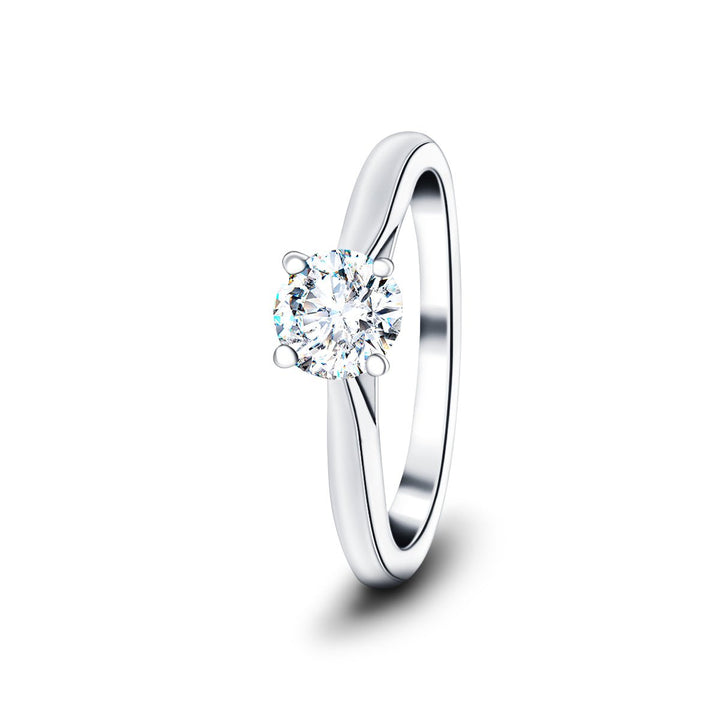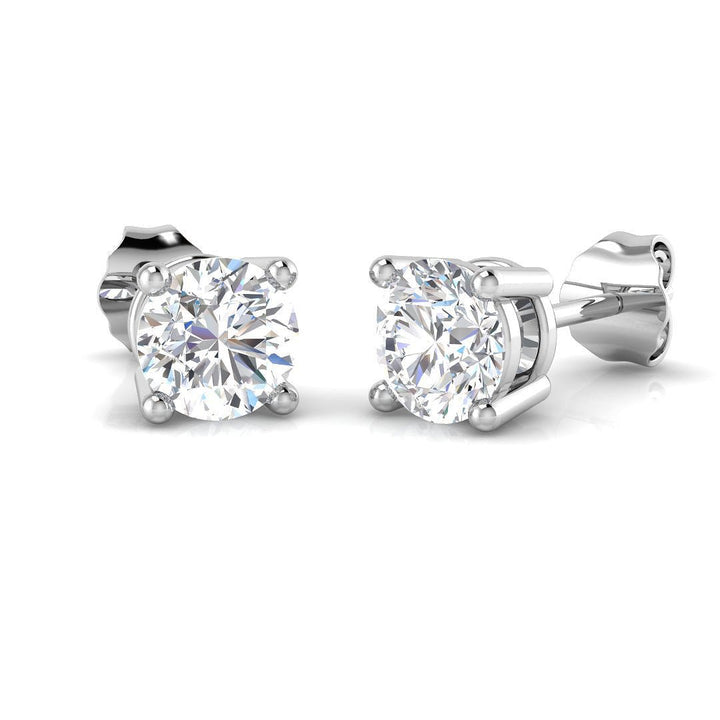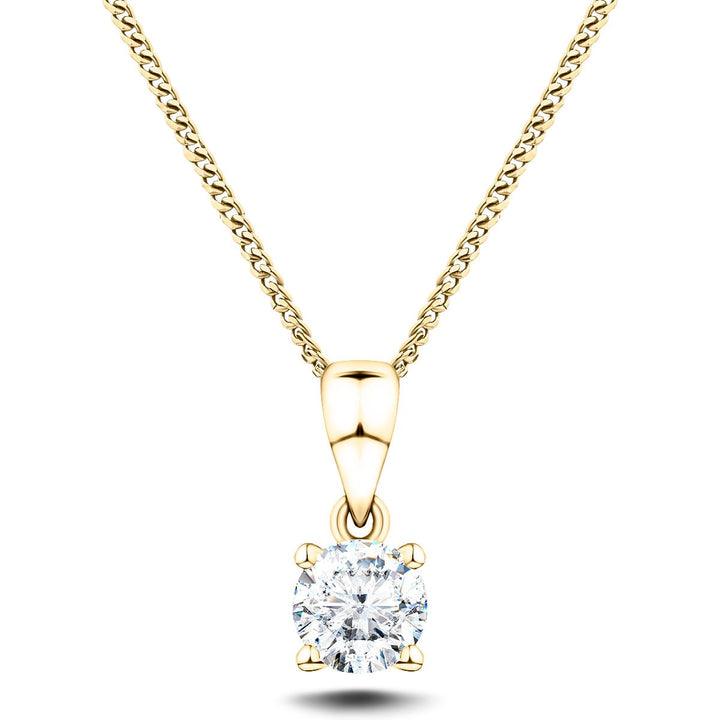Diamonds have been a symbol of wealth and status for centuries. However, before the 1940s, diamond quality terms were inconsistent and subjective, leading to confusion and mistrust in the industry. This lack of standardisation made it difficult for consumers to make informed purchasing decisions and for jewellers to accurately price their products.
Recognising this problem, Robert M. Shipley established the Gemological Institute of America (GIA) in 1931 with the aim of creating standardised diamond quality terms. The GIA's initiatives have since transformed the diamond industry, establishing the 4Cs of diamond quality that are universally recognised today.
These standards have brought clarity and transparency to the industry, allowing consumers to make informed purchases and jewellers to accurately price their products. This article will explore the evolution of diamond quality from subjective to standard and the impact of the GIA's initiatives on the diamond industry.
You can learn more about diamonds, precious metals and other jewellery matters HERE.
Key Takeaways From This Article
- - The diamond industry has traditionally used diamonds as a symbol of wealth and status for centuries, but before the 1940s, diamond quality terms were inconsistent and subjective.
- - The establishment of GIA by Robert M. Shipley in 1931 created standardised diamond quality terms. GIA's initiatives transformed the diamond industry with the 4Cs of diamond quality: cut, colour, clarity, and carat weight.
- - GIA graders use gemmological microscopes to evaluate diamonds for more accurate and objective evaluation of diamond quality, and advanced technology enhances the precision and accuracy of the grading process.
- - The future of diamond evaluation looks promising with endless technological advancements, and the industry is evolving from subjective to standard diamond quality. Blockchain technology could potentially create a secure and transparent record of a diamond's journey from mine to market.
Ella Lab Diamond Solitaire Engagement Ring 1.00ct D/VVS 18k White Gold

£1,300.00
£2,486.00
Celebrate your love with the stunning Ella Lab Diamond Solitaire Engagement Ring. Handcrafted in the UK with 18k white gold, this ring features a brilliant 1.00-carat D/VVS-graded lab-grown diamond. With IGI certification, a UK hallmark, and a lifetime workmanship guarantee,… read more
Diamond Grading History
The establishment of the GIA by Robert M. Shipley in 1931 revolutionised the diamond industry by introducing standardised diamond grading methods. Prior to the GIA's creation, diamond quality terms were inconsistent and subjective. This led to confusion among consumers and made it difficult for jewellers to accurately describe the quality of their diamonds.
However, with the introduction of Shipley's 4Cs of diamond quality, diamonds could be objectively evaluated based on their cut, colour, clarity, and carat weight. Richard T. Liddicoat and colleagues, with the development of the GIA D-to-Z Colour Scale and Clarity Scale further refined this standardised approach to diamond grading history.
GIA graders also began using gemmological microscopes to evaluate diamonds, providing a more comprehensive diamond quality analysis. The historical importance of the GIA's contribution to the diamond industry cannot be overstated.
The 4Cs of diamond quality have become universally recognised and have set the standard for diamond grading worldwide. This has led to greater transparency in the diamond industry, allowing consumers to make informed decisions when purchasing diamonds. Additionally, GIA graders' use of accurate laboratory-grade equipment has provided a more accurate and objective evaluation of diamond quality.
As a result, the GIA has become the most trusted authority in diamond grading, and its influence can be seen in the diamond industry today.
Of course, there are other reputable diamond grading organisations that can reliably grade diamonds. Still, the GIA is the gold standard in the diamond industry, famed for its consistency and accuracy.
The Establishment of The 4Cs
Establishing a universally recognised system for evaluating diamonds was like developing a common language for communication, allowing for more accurate and efficient exchanges of information within the industry. This led to the creation of the 4Cs of diamond quality, which are universally recognised today. The 4Cs include Carat weight, Cut, Clarity, and Colour, and they provide a standardised method for evaluating and grading diamonds.
Gemological consistency is essential in the diamond industry, as it ensures that the value of a diamond is accurately assessed and communicated. The establishment of the 4Cs has provided this consistency, allowing for universal recognition and understanding of diamond quality. The table below summarises the 4Cs and their grading scales, providing a quick reference for those looking to purchase or evaluate diamonds.
| The 4Cs | Grading Scales |
| Carat weight | 0.25 - 5+ |
| Cut | Excellent - Poor |
| Clarity | Flawless - Included |
| Colour | D (Colourless) - Z (Light Yellow) |
Modern Diamond Evaluation
One approach to modern diamond evaluation involves the use of advanced technology to enhance the precision and accuracy of the grading process. GIA graders use gemmological microscopes to evaluate diamonds, but they also use other tools such as spectrophotometers, which analyse a diamond's colour, and Sarin machines, which capture a diamond's measurements.
These machines allow for a more objective and consistent grading process, ensuring that diamonds are evaluated fairly and accurately.
As technology continues to advance, the future of diamond evaluation looks promising. The use of artificial intelligence and machine learning could potentially revolutionise the grading process and eliminate human error.
Additionally, blockchain technology could be used to create a secure and transparent record of a diamond's journey from mine to market, further enhancing consumer trust in the diamond industry.
The possibilities for technological advancements in diamond evaluation are endless, and it will be exciting to see how they shape the future of the industry.
Lab Diamond Solitaire Stud Earrings 2.00ct G/VS in 18k White Gold

£995.00
£2,651.00
Indulge in luxury with these captivating Lab Diamond Solitaire Stud Earrings, designed and handcrafted in the UK with the finest materials. The earrings feature a total of 2.00 carats of G/VS solitaire diamonds in a secure claw setting, set in… read more
Frequently Asked Questions
What were some major challenges in establishing a standardised system for diamond quality grading?
Challenges to establishing standardised diamond quality grading included subjective terminology, inconsistency, and lack of universal recognition. Implementation and adoption required creating objective criteria, such as the 4Cs, and utilising gemmological microscopes along with other specialised equipment for evaluation.
How has the diamond industry responded to the introduction of the 4Cs and other standardised grading systems?
The diamond industry has embraced the 4Cs and standardised grading systems, as they provide a universal language for evaluating diamond quality. Globalisation has increased demand for standardised grading, and education plays a crucial role in promoting understanding of these standards.
Are there any criticisms or controversies surrounding the use of the 4Cs and other grading systems?
Controversies surrounding the 4Cs and other grading systems include limitations in evaluating diamonds, ethical concerns regarding diamond mining, and the global adoption of Western standards. However, these systems remain widely recognised in the diamond industry.
How has technology affected the way in which diamonds are evaluated and graded?
Advancements in diamond grading technology, such as automated grading systems and high-tech imaging, have greatly improved the accuracy and consistency of diamond evaluations. However, these advancements also impact diamond pricing as the market adjusts to the increased precision and availability of information.
What impact do factors such as cultural trends and consumer preferences have on diamond grading and pricing?
Cultural influence and consumer behaviour significantly impact diamond grading and pricing. As trends change, so do preferences, which can affect the perceived value of a diamond. Objective grading standards must remain consistent with maintaining consumer trust.
Lab Diamond Solitaire Necklace Pendant 0.70ct G/VS in 9k Yellow Gold

£565.00
£1,076.00
This Lab Diamond Solitaire Necklace Pendant perfectly blends luxury and style. The pendant necklace features a round claw-set 0.70-carat G/VS-graded lab-grown diamond. The setting is 9k yellow gold. This lovely jewellery has a lifetime workmanship guarantee, a British hallmark, and… read more
Conclusion
The evolution of diamond quality from subjective to standard has been a significant achievement for the industry, and it all started with Robert M. Shipley's recognition of the need for standardised diamond quality terms. The establishment of the Gemological Institute of America (GIA) in 1931 and the development of the 4Cs of diamond quality brought much-needed consistency and objectivity to the industry, leading to increased trust among consumers.
Today, the 4Cs of diamond quality are universally recognised, and the GIA's initiatives have transformed the diamond industry.
However, some may argue that the 4Cs of diamond quality have limitations and do not account for other factors that may affect a diamond's overall value, such as fluorescence or symmetry. While this is a valid concern, it is important to note that the 4Cs are just one aspect of diamond evaluation, and other factors are taken into account when determining a diamond's value.
The GIA also offers additional grading services, such as fluorescence evaluation and symmetry grading, to provide a more comprehensive assessment of a diamond's quality.
The evolution of diamond quality standards has been a crucial development in the diamond industry, and the GIA's initiatives have played a significant role in this transformation. While there may be limitations to the 4Cs of diamond quality, it is important to recognise that they are just one aspect of diamond evaluation and that the GIA offers additional grading services to provide a more comprehensive assessment. Overall, the GIA's efforts have increased consumer trust and confidence in the diamond industry, making it a more transparent and reliable market for all.
At After Diamonds, our real, lab-grown diamonds are carefully graded and certified to ensure that you get exactly what you pay for so that you can have the confidence to choose ethically created real diamond jewellery.
Please check out our collections of British designed and handcrafted fine diamond jewellery and experience the benefits of decades of work in creating the high standards that consumers deserve!




